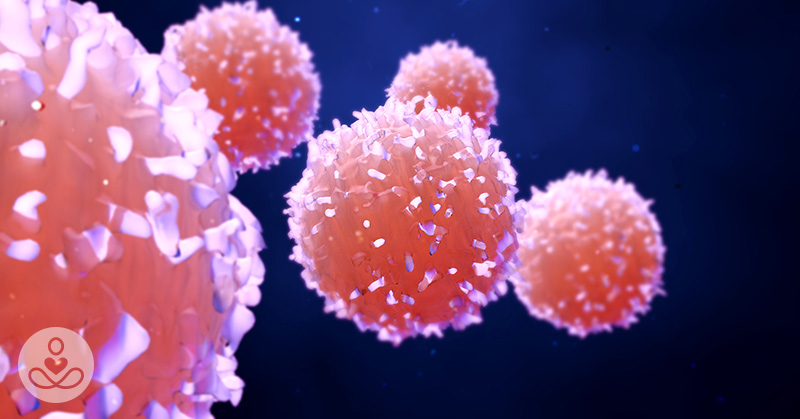With more than 99 percent of multicellular organisms reproducing through sex, it’s easy to think that sexual reproduction happens for reason [1].
There are, of course, organisms that reproduce asexually, which works as a type of cloning method and doesn’t require another organism’s DNA. Asexual reproduction, therefore, doesn’t need two organisms to reproduce, although some species can switch between asexual and sexual reproduction, a prime example being worms [2].
As a result of its being the most common form of reproduction among multicellular organisms on this plant, sexual reproduction must have its benefits. But is helping to prevent cancer among them? This weird new research from a study conducted in France says yes!
Why Sexual Reproduction Is Favorable
The new study proposes the idea that sexual reproduction evolved to reduce the chances of genetic mutations from being passed down to offspring [3].
In other words, the study claims sex is favored by natural selection because it reduces malignant cell lines (such as those that can lead to cancer) from being passed down to generations. In asexually-reproducing species, their cloned offspring have the same genes, meaning they’d inherit the same mutations.
However, in sexual reproduction, genetic contributions from two organisms are required, resulting in greater genetic diversity of the offspring. This makes the organisms more likely to pick advantageous gene variants which can provide a better defense against immune system threats such as cancer.
The idea isn’t a new one—researchers have long said that sexual reproduction is a favorable trait due to its ability to select genes from a larger gene pool than beings that engage in asexual reproduction.
How Exactly Does Sex Reduce Malignant Cell Transmission?
The study notes that “cheater” cells are less likely to be passed down to offspring in sexually reproducing species. Cheater cells are cells that go against the best interest of an organism [4].
What does this mean? Well, in multicellular organisms (like you, me, and my rabbits), all the cells in the organism function in a way that supports the survival of the being. However, cheater cells aren’t trying to help the organism. They proliferate solely for their own benefit, even if it means killing us—think cancer.
Specific types of cancer can still be transferred between organisms and even between species, although cancer itself isn’t contagious and doesn’t spread like a contagious disease [5].
The new research suggests that asexual reproduction benefits transmissible cancer cells. These malignant cells have lots of time to adapt to organisms that are genetically identical—giving the cancer time to adjust to their genetics to serve its best interest and proliferate as generations of cloning went on.
However, genetic diversity via sexual reproduction appears to offer a better way, which, the study suggests, could be why the vast majority of species on this planet reproduce sexually. Sexual reproduction can help prevent an offspring from ending up with malignant cells thanks to the larger gene pool going into its creation.
New genes reduce the chances that malignant cell lines—especially ones that are already well adapted to a specific host—would transfer to the offspring.
Other Research That Proves Genetic Diversity Is Advantageous
While the study presents a hypothesis that’s a bit difficult to prove, this certainly isn’t the only research that’s been published showing that sexual reproduction helps avoid harmful genetic mutations.
Research from the University of Toronto shows that species that reproduce sexually are naturally healthier over time because they aren’t able to accumulate genetic mutations that adapt to a host [6].
While some research says that favorable traits are more likely to be passed down in asexual reproduction, other studies point out that unfavorable traits are passed down as well, leading to the belief that more genetic diversity is better than none at all [7].
However, genetic diversity is possible among beings that reproduce asexually, as the genetic material they pass on is “nearly identical”, and some even say genetic mutations actually contribute to genetic diversity [8]. So clearly there is still a lot we can’t yet prove regarding the role of sex, genetic diversity, and malignant cell lines.
What Does This Mean for Us?
While the research from France makes an interesting hypothesis in regards to genetic mutations and sexual reproduction, it’s far from conclusive. Other research still says that more proof is lacking in regards to the role of genetic diversity in diseases such as cancer [9].
Since virtually all of us are the offspring of two unrelated parents, what does this new research mean for us?
The research highlights the fact that even with genetic diversity, genetic mutations that can lead to cancer and other health conditions can be passed down. This emphasizes the importance of knowing your family history to better assess your risk—and perhaps even your children’s risk—of certain health problems [10].
However, it’s important to know that having a family history of conditions such as cancer doesn’t always mean you’ll have a specific genetic mutation that results in a higher cancer risk [11].
The research also points to the interesting notion that sexual reproduction will most likely continue to be the dominant form of reproduction on this planet because of genetic diversity. So, in case you were worried that in two billion years your very distant offspring will be hermaphrodite worms that don’t need a mate to reproduce—don’t worry, your ancestors will still be doing it.
Sources
- https://www.the-scientist.com/cover-story/the-sex-paradox-37259
- https://www.ncbi.nlm.nih.gov/pubmed/21680428
- https://journals.plos.org/plosbiology/article?id=10.1371/journal.pbio.3000275
- https://royalsocietypublishing.org/doi/full/10.1098/rstb.2014.0219
- https://www.cancer.org/cancer/cancer-basics/is-cancer-contagious.html
- https://phys.org/news/2015-01-affirms-sexual-reproduction-mutations.html
- https://education.seattlepi.com/process-meiosis-creates-better-genetic-diversity-asexual-reproduction-5973.html
- https://courses.lumenlearning.com/suny-microbiology/chapter/how-asexual-prokaryotes-achieve-genetic-diversity/
- https://www.ncbi.nlm.nih.gov/pmc/articles/PMC2810093/
- https://www.ncbi.nlm.nih.gov/books/NBK115560/
- https://www.cdc.gov/cancer/gynecologic/basic_info/family-history.htm
- https://www.sciencealert.com/sex-might-have-evolved-to-fight-cancers-that-can-be-transmitted-like-viruses

